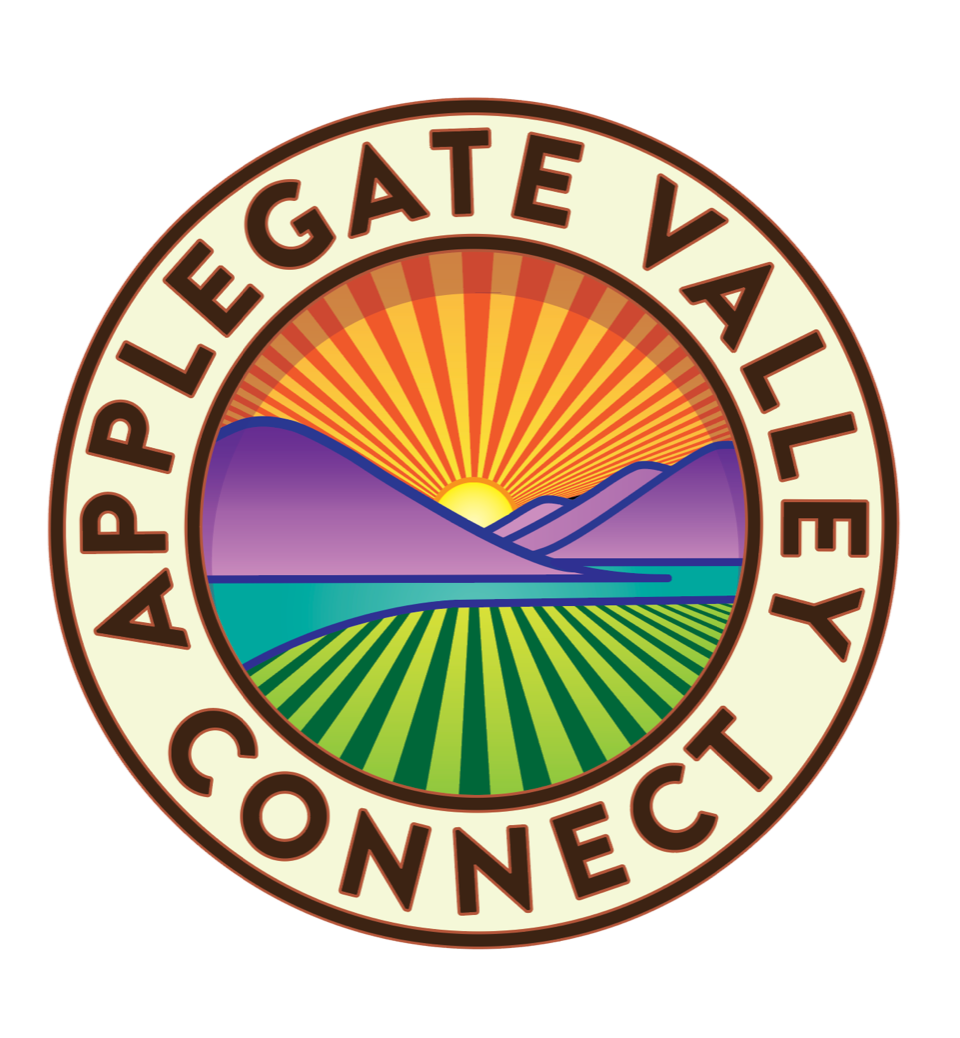The Applegate Valleys’s Food and Farm Network gathers for their third annual meeting
A Greater Applegate recently hosted the third annual meeting of the Applegate Valley Food and Farm Network (AVFFN). Jaimy Wilkinson, the Network Coordinator, started the meeting by leading the group through a series of exercises tailor-made for farmers: wrist bends, shoulder stretches and other movements for reducing injury and boosting efficiency.
But since it was the end of the growing season—November 13th—the group quickly began to dig into some off-season strategizing. The tasks of networking, brainstorming, planning, and marketing are as much a part of farming as tilling, planting, weeding, and harvesting.
The event was part of an ongoing effort to realize the goals in the Applegate Valley Vision. The Vision is an 88-page document that outlines sentiments shared by residents during dozens of listening sessions held throughout the Applegate during 2020-2021. Vibrant local farms emerged as a priority during the sessions. Essential to this is strengthening the connections between farmers, products, and consumers.
It’s ironic: The same rural wide-open landscape that makes the Applegate so ideal for farming presents a challenge when it comes to product coordination, distribution, and communication. Distances are long, and busy farmers don’t have a lot of occasions to network. Streamlining systems to overcome this challenge takes time and has been underway for years.
“We are a group dedicated to this process in the way that farmers are dedicated to their crops,” said Megan Fehrman, Co-Executive Director of A Greater Applegate.
Making Progress: A Thriving Farmers Market
Jaimy took some time to acknowledge the progress made so far.
The biggest success, she pointed out, was the Applegate Evening Market. This year it moved to the Lindsay Lodge, where the lush grassy lawn and shaded areas next to the Applegate River made for an idyllic setting—even on the hottest days. The market felt vibrant each week. One measure of market attendance is the use of SNAP and Double-Up Food Bucks, which soared this year. Patrons were able to visit The Station Market and Cafe who generously supplied overflow parking for the event and the Applegate History Museum opened on Wednesdays to soak up some of the increased foot traffic in ‘Downtown Applegate.’
 Also, the steady presence of produce every week was a big win for the market, which in the past has struggled with that. The group erupted in applause for Intergalactic Acres and their weekly offerings of fresh grown vegetables. The more widespread use of Applegate-made and -grown labels was also a success.
Also, the steady presence of produce every week was a big win for the market, which in the past has struggled with that. The group erupted in applause for Intergalactic Acres and their weekly offerings of fresh grown vegetables. The more widespread use of Applegate-made and -grown labels was also a success.
The farmers and producers then sorted into smaller breakout groups to gather ideas on some key themes: farmer-to-farmer networking, the farmer-consumer connection, and the creation of food hubs. After some time discussing and enjoying pizza, the group reconvened to share their ideas.
Farmers connecting to farmers…
To overcome the distances between farms, the Applegate Valley Food and Farm Network is looking to launch a dynamic online listserv where the farmers can share information, photos, resources, and advice online. It would also support equipment sharing and bulk ordering.
The farmers also stressed the need to meet in person and floated the idea of an annual retreat to bring them face-to-face for fun and relationship-building.
Farmers connecting to the consumer…
Mary Alionis, from Whistling Duck Farm, emphasized the importance of broadening the distribution of Applegate produce. “Exporting to the greater valley is key,” she said.
But getting produce to consumers and stores can be complicated when farmers are working as individuals. Sometimes their quantities are too small, or they can’t provide the variety of products that stores and consumers are looking for.
Chris Jagger, the owner of Blue Fox Farm, presented one solution that will be tested in 2025. The pilot project will entail setting up an aggregation point at Blue Fox Farm to distribute coordinated crops to Rogue Food Unites. The end goal is crop coordination among farmers to pool their products, cut down on individual drive time, and sell products more consistently to outlets in town.
Food and Resiliency Hubs…
Bringing produce to underserved communities is also a priority of the AVFFN. Some areas of the Applegate have little access to fresh food. Chris talked about the creation of a truck and trailer “food hub” that will bring produce to these communities. Designs are still underway, but the set up will convert into a mobile kitchen so it can double as an emergency hyperlocal food and supply hub during a crisis.
The meeting closed with Alison Sexauer from Rogue Valley Food Systems Network asking an essential question:
“How do we stop people from driving outside the valley and supporting the big box stores instead of the Farmers Market?”
It’s clear from the progress made over the past three years and the future plans, the Food and Farm Network is answering that question.


